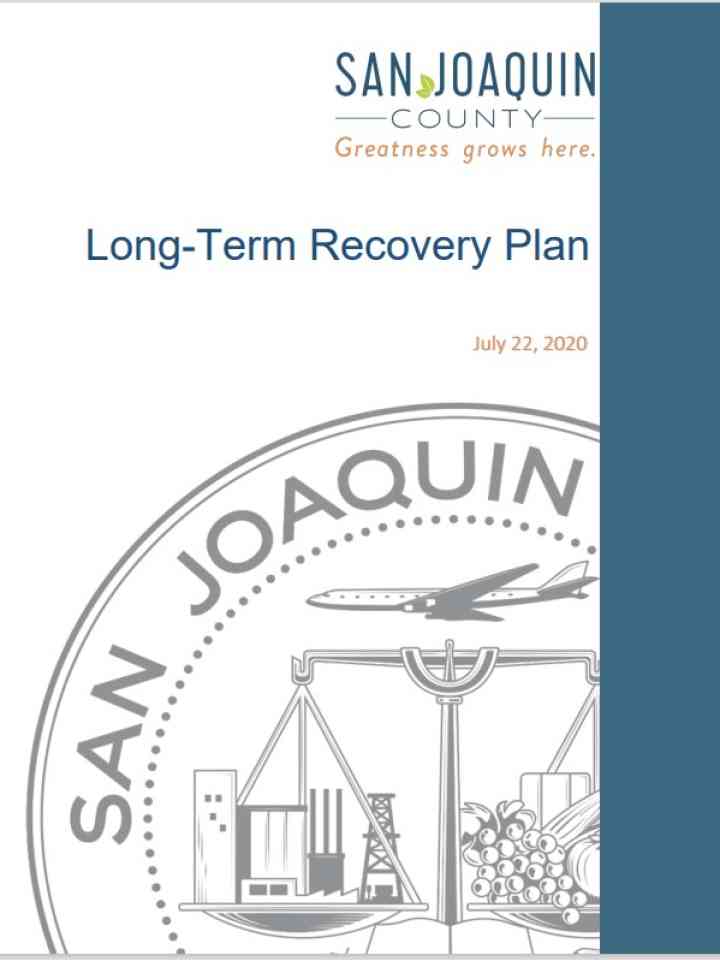San Joaquin County Long-Term Recovery Plan (July 22,2020)
The San Joaquin Operational Area Recovery Plan is based on the recognition that a successful recovery begins before the disaster ever occurs. Through preplanning, training and exercising, we more effectively build and sustain our recovery capabilities in the service of our respective jurisdictions and amongst all our Whole Community partners.
Parts of this plan address the County of San Joaquin's role as an Operational Area under California's Standardized Emergency Management System (SEMS), to communicate and coordinate amongst the county's geographic area and all political subdivisions within the County area, as well as to serve as a link to the State. Other parts of this plan address the County of San Joaquin's role as the local government of the unincorporated area of San Joaquin County, and speak to the recovery management and operations of County departments solely within their roles, responsibilities, and authorities.
The Federal Emergency Management Agency (FEMA) National Disaster Recovery Framework (NDRF) outlines the strategy and doctrine for how the whole community builds, sustains, and coordinates delivery of Recovery. This plan recognizes the concept that Recovery extends beyond simply repairing damaged structures and roadways. It includes the continuation or restoration of services critical to supporting the physical, emotional, and financial well-being of impacted community members. The Recovery Support Functions are a grouping of six core recovery capabilities that provide a structure to outreach and facilitate problem solving, improve access to resources, and support coordination amongst Whole Community partners.
These include health (including behavioral health) and human services capabilities and networks, public and private disability support and service systems, educational systems, community social networks, natural and cultural resources, affordable and accessible housing, infrastructure systems, and local and regional economic drivers. Together, these elements of recovery contribute to rebuilding resilient communities equipped with the physical, social, cultural, economic, and natural infrastructure required to meet future needs.
Explore further
